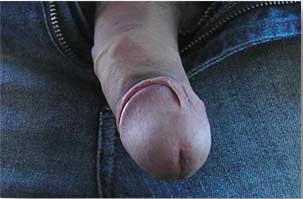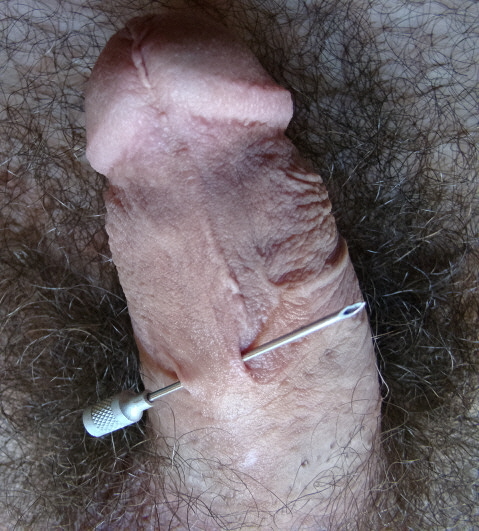Penile Rehabilitation
Effect of Platelet-Rich Plasma on Penile Rehabilitation after Radical Prostatectomy
What is penile rehabilitation?
 Penile rehabilitation Procedures (PRPs) are different methods and practices that are used to help patients recover their ability to control eth functioning of their penises. For patients who have lost this important ability, specific methods are used to help them recover and regain it within the shortest time possible.
Penile rehabilitation Procedures (PRPs) are different methods and practices that are used to help patients recover their ability to control eth functioning of their penises. For patients who have lost this important ability, specific methods are used to help them recover and regain it within the shortest time possible.
There are different methods and techniques that are used as part of Penile Rehabilitation Procedures. For instance, special devices that work as pumps may be used on a patient prior to having a sexual experience. Such devices work by altering the flow of blood within the corpora cavernosa region of the penis. By withholding blood in this region, such devices enable a man to have a full erection for he required length of time.
Other forms of procedures are used in this approach as well. For instance, special drugs have been developed for the sole function of altering the flow of blood as well the functioning of nerves in the prostate region. The basic purpose of all the methods and techniques used is to shorten the time that it takes for a man affected from temporary erectile dysfunction to regain the ability to erect.
When is penile rehabilitation needed?
Penile Rehabilitation Procedures are required for patients who have undergone Radical Prostatectomy and, as a result of this, have lost the ability to use their penises. Radical Prostatectomy is a special type of surgery that is usually carried out to remove the prostate in men who have advanced prostate cancer.
The need for the procedure is to deal with this type of cancer once and for all in cases where it has already metastasized and other forms of treatment are not tenable. Therefore, since prostate cancer is a common disease in men of advanced age, the use of this procedure to solve the problem has been and will remain common in the days to come.
Although this procedure is effective in dealing with prostate cancer, its effects on the body of a patient are severe. The most important effect of this procedure is that it leads to major damage of important nerves in the corpus cavernosa region. When the cavernous nerve is injured, the ability to control the penis is lost immediately.
After undergoing the procedure, many men are expected to lose this ability for a year or so. This is the approximated time that it takes for the nerves and tissues to heal completely. However, since many men exhibit the need for sex well in their advanced ages, there is need for the time taken to regain the ability to erect to be reduced. Herein is the need for Penile Rehabilitation Procedures.
What is platelet- rich plasma?
This is a relatively new type of procedure that can be used to treat erectile dysfunction arising from the damage caused by Radical Prostatectomy. The exact effect of this method on the body of a patient is yet to be fully documented but work has proven that the method is quite effective. What happens in this method is that plasma that is rich in platelets and is derived from the body of a patient is used to correct the damage done to the corpus cavernosa region of the penis. It is believed that the healing nature of the cells that are contained in the plasma used in this procedure is effective in repairing the tissues in this region.
How is platelet rich plasma administered?
One advantage of this method as compared to the Other Penile Rehabilitation Procedures is that it does not entail the use of drugs or other devices that may be unpleasant to some people. What happens is that a small sample of blood is drawn form a person. The sample is then subjected to special laboratory treatment so that only the platelets are separated. The separated platelets are then injected back to the body of a person, but this time, at specific locations around the penis. Special local anesthesia is used to ensure that a patient does not experience pain in the course of the procedure. The entire procedure takes less than 30 minutes.
How does platelet rich plasma work?
The procedure works by simply stimulating healing, growth and regeneration in the entire corpus cavernosa region. Naturally, platelets have been known to play a critical role in the healing process. Therefore, their introduction to the damaged region triggers the natural healing process. Furthermore, the platelet-rich plasma that is introduced in the region stimulates the activity of stem cells, another important aspect of natural healing and regeneration.
The exact process by which Platelet Rich Plasma works to help a person recover the ability to erect is related to the effect that this therapy has on the nerve fibers within the region. Since Radical Prostatectomy damages nerve fibers, this procedure works by restoring the fibers that are necessary for smooth functioning of the nerves in the corpus cavernosa region.
If you have undergone Radical Prostatectomy and have lost your ability to erect as a result, you definitely need to undergo specific Penile Rehabilitation Procedures. We recommend that you visit us at AWAREmed Health and Wellness Resource Centre. We are located in Myrtle Beach, South Carolina. Dr. Dalal Akoury will be ready to work with you on the most appropriate form of Penile Rehabilitation Procedure to undertake.
Effect of Platelet-Rich Plasma on Penile Rehabilitation after Radical Prostatectomy
Related articles







 For many patients, undergoing radical prostatectomy, a complex
For many patients, undergoing radical prostatectomy, a complex  Another one is the vacuum constriction device which, as the name suggests, works by sucking blood into the penis thus initiating an erection. The device is usually used minutes to intercourse and its efficiency has been commendable.
Another one is the vacuum constriction device which, as the name suggests, works by sucking blood into the penis thus initiating an erection. The device is usually used minutes to intercourse and its efficiency has been commendable.


